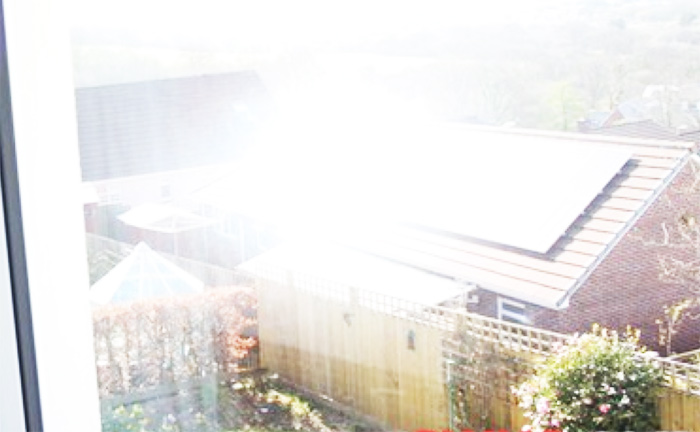Posted: June 21, 2013
S.B. County Board of Supervisors Establishes Moratorium.
On Wednesday, June 12, 2013, the San Bernardino County Board of
Supervisors voted to put the brakes on issuing permits for large alternative energy projects
so to allow time for the county to update its solar and wind energy ordinances.
The freeze on permits covers all unapproved commercial solar and wind
projects in the unincorporated areas of the county located on private land. The moratorium
does not cover federal BLM land. The term of the moratorium is for 45 days; however, the
moratorium can be extended for up to one year.

The hold on construction permits do not include solar or wind
installations upon personal residential property; such as home rooftop installations.
← Sun glare in a Pennsylvania community. (Click)
A Community Alliance's Blotter report last March on the Mountain
View Road solar installation was picked-up and reported upon in an excellent news article written
by Brooke Shelf of the Desert Dispatch. Her article with wider circulation we believe
was responsible for the Los Angeles television media picking-up on Newberry's outrage over the
inequity of an industrial solar project being built in a residential neighborhood.
Even before the mass media coverage, the Newberry Springs Community
Alliance found itself impressed with the responsiveness of county First District supervisor Robert
Lovingood and his field representative for Newberry Springs, Ron Frame. Frame was
exceptionally quick to visit Newberry Springs, meet with an Alliance representative, and
start investigating the matter.
County Third District supervisor, James Ramos, whose district also
comprises a large section of the desert, has also been the recipient of his constituents'
concerns that the current county ordinances do not adequately protect local citizens. Together,
Lovingood and Ramos united to present the proposed moratorium before the full board of
supervisors which passed the proposal unanimously.
The moratorium is an excellent first step; however, it fails to address
the growing worldwide problem of urban glint and glare from residential solar energy
installations. As the county reviews it ordinances on commercial solar installations,
hopefully it will consider upgrading its regulations on residential installations as well.
Costly over regulations are unwelcomed; however, a solar panel nuisance
ordinance is needed to prevent residential solar installations from damaging the health,
well being, and property values of adjacent homeowners.
|

